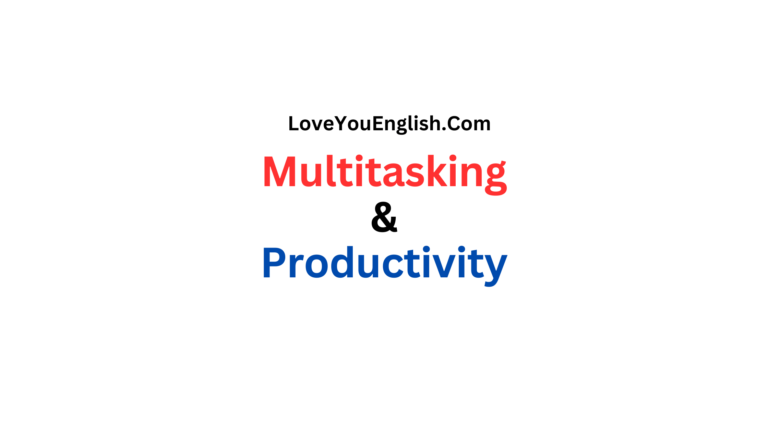Learn English Through Movies and TV Shows
Ever paused a movie just to look up a word… and then completely forgot what was happening in the scene?
If you’ve ever tried learning English through movies or TV shows and felt both excited and overwhelmed, you’re not alone.
It’s a method many learners try, but only some get real results from. The good news?
With the right approach, watching movies and shows can be one of the most enjoyable and effective ways to improve your English.
As someone who’s been teaching English for over a decade, I’ve seen countless students transform their speaking, listening, and even cultural understanding, just by watching the right shows the right way.
In this guide, I’ll walk you through how to turn your screen time into serious English progress.
No boring drills. No grammar headaches.
Just practical, proven tips to help you learn while you binge.
Why Movies and TV Shows Work for Learning English
Let’s start with the big question: Why does this method work so well?
Here’s what makes movies and TV shows such a powerful tool:
1. They expose you to real, natural English
Classroom English and textbook examples are great for basics. But movies and shows? That’s where you hear how people actually speak.
Think about how often we say things like:
-
“What’re you up to?”
-
“I’ll catch you later.”
-
“No way!”
These are rarely in textbooks—but they’re everywhere in shows.
2. You learn vocabulary in context
You’re not just memorizing lists of words. You’re seeing them used—with facial expressions, body language, and emotion.
Example: Hearing a character shout, “I can’t believe you bailed on me!” teaches you what “bailed on” means much more effectively than a dictionary definition ever could.
3. It improves listening and pronunciation
Over time, your ears get used to different accents, speeds, and speech patterns. You start to feel the rhythm of English.
Many of my students have told me, “After a few months of watching Friends or The Office, I could understand so much more in real conversations!”
4. It builds cultural knowledge
Language is culture. When you watch shows, you’re also learning how people behave, joke, argue, flirt, or even say sorry—something textbooks often skip.
How to Choose the Right Movies and Shows
Not all content is equal when it comes to language learning. Here’s how to pick something that helps and entertains.
 Start with what you enjoy
Start with what you enjoy
This might sound obvious, but it’s crucial: if you don’t like the show, you won’t stick with it.
Love crime dramas? Try Sherlock or Breaking Bad. Prefer romance? Maybe Notting Hill or Emily in Paris.
The key is to find something that hooks you.
 Stick to dialogue-rich shows
Stick to dialogue-rich shows
Look for shows where people talk a lot (and not too fast!). Here are some great options by level:
 Beginner – Intermediate:
Beginner – Intermediate:
-
Friends – clear pronunciation, everyday topics, and lots of repetition.
-
Modern Family – family life, humor, and simple storylines.
-
The Good Place – funny, clever, and not too complex.
 Intermediate – Advanced:
Intermediate – Advanced:
-
The Office (US) – sarcasm, workplace vocabulary, American culture.
-
Brooklyn Nine-Nine – crime comedy, fast-paced but fun.
-
How I Met Your Mother – lots of idioms, dating culture, informal speech.
 Advanced:
Advanced:
-
Suits – legal jargon, fast dialogue, and business vocabulary.
-
House of Cards – political language, formal and persuasive tone.
-
Peaky Blinders – historical slang and strong British accents.
And for movies?
Start with ones you’ve already seen in your own language—so the story doesn’t confuse you.
Animated films like Finding Nemo or Inside Out are great starters. Don’t underestimate them!
Watching Strategies That Actually Work
Just watching isn’t enough. To really learn, you need to be a bit more intentional.
Here’s how:
 Use subtitles—but wisely
Use subtitles—but wisely
Start with English subtitles. This helps connect sounds with spelling. Later, challenge yourself by turning them off—or switching to English audio with no subtitles.
Here’s a suggested subtitle progression:
 Pause and repeat short scenes
Pause and repeat short scenes
Rewind, mimic, shadow the dialogue. Yes, it takes effort—but it’s fun effort.
Here’s what I often recommend to students:
-
Choose one short scene (2–3 minutes)
-
Watch with subtitles and note new phrases
-
Rewatch without subtitles
-
Repeat sentences out loud (copy their tone, stress, emotion)
This builds speaking fluency, listening, and pronunciation all at once.
 Keep a vocabulary journal
Keep a vocabulary journal
Don’t write down every new word. Just the ones that repeat often or seem useful.
Example:
Use a simple format:
Bonus tip: Review this journal weekly and try using the words in conversation or writing.
 Repeat episodes (yes, really!)
Repeat episodes (yes, really!)
Rewatching helps cement the language in your brain. Each time, you’ll notice new details—and understand more without subtitles.
I’ve had students watch a single Friends episode 4–5 times and confidently use the expressions they heard in real conversations. It works.
A Real-Life Example: How One Student Leveled Up
Let me tell you about Ramesh, a software engineer from India. He joined my class with decent grammar skills but said, “I freeze when I talk. And I don’t understand fast English on calls.”
I suggested he start watching Brooklyn Nine-Nine, one episode per week.
Here’s what he did:
-
Watched each episode twice—first with subtitles, then without.
-
Paused to note 5 new expressions.
-
Repeated lines out loud while walking or commuting.
Three months later, his colleagues noticed he was speaking more naturally, confidently, and even using idioms like “cut to the chase” and “on the same page.”
Watching TV wasn’t his only method—but it was the most fun and effective one.
Common Challenges (and How to Beat Them)
Let’s be honest—this method has its ups and downs. Here’s what you might face, and how to stay on track.
 “It’s too fast—I can’t understand anything!”
“It’s too fast—I can’t understand anything!”
Solution: Don’t panic. Use English subtitles and slow down playback (many platforms let you watch at 0.75x speed). Start with easier content and build up.
 “I get distracted and forget I’m supposed to be learning.”
“I get distracted and forget I’m supposed to be learning.”
Solution: That’s okay sometimes! But for learning, set intentional time—like 20 focused minutes for one scene, then relax and enjoy the rest.
 “I can’t remember new words.”
“I can’t remember new words.”
Solution: Write them down. Use them. Teach them to a friend. Words stick better when you use them actively—not just passively.
Don’t Just Watch—Use What You Learn
This is the most important part.
Once you’ve picked up new words or phrases, try using them:
Even better—record yourself repeating scenes or dialogues. It helps with pronunciation and builds confidence.
Some of my students even post these clips on Instagram—it’s fun and motivating!
Bonus: Tools and Resources to Supercharge Your Learning
Here are some great tools that make this method even more powerful:
 Language Reactor (Chrome extension)
Language Reactor (Chrome extension)
Adds dual subtitles (your language + English) on Netflix and YouTube, plus a vocabulary list.
 Netflix or Amazon Prime
Netflix or Amazon Prime
Offers a wide range of English shows with subtitle options. Great for binge-watching with a purpose.
 Anki or Quizlet
Anki or Quizlet
Flashcard apps to store and review vocabulary. You can even add audio and example sentences.
 Podcasts & YouTube Channels
Podcasts & YouTube Channels
Once you get comfortable with shows, add podcasts like The English We Speak (BBC) or YouTube channels like English Addict with Mr Steve.
A Note on Limitations
Now, let’s be honest. Watching movies isn’t a magic pill.
It helps a lot, but it’s best combined with:
-
Speaking practice (with friends, tutors, or apps like Tandem)
-
Reading (books, news, blogs)
-
Writing (journal entries, messages, emails)
Also, not every phrase you hear in movies is “correct” for real life. Some expressions are overly casual or too dramatic.
Use your judgment—and when in doubt, ask a teacher or native speaker.
Final Thoughts: Make It Fun, Make It Yours
Learning English through movies and TV shows isn’t just effective—it’s also incredibly fun.
It connects you to stories, people, and cultures. And best of all, it makes English feel alive.
So go ahead—make popcorn, open Netflix, and start learning.
But remember: don’t just watch. Pause, rewind, repeat, speak, and use.
As I always tell my students: language isn’t something you study once and forget. It’s something you live.
And with the right shows, you’ll start living English—one episode at a time.
Your Turn: Ready to Try?
Pick a show today—just one—and watch the first 5 minutes with English subtitles.
Pause when you hear something interesting. Write down 2 phrases.
Then come back tomorrow and do it again.
Before you know it, you’ll be saying, “Wait, I get that joke now!” And that’s when you know—it’s working.
If you enjoyed this guide, feel free to share it with fellow learners or drop a comment with your favorite English-language show.
Let’s build a list together!
Happy watching—and happy learning!
More topics:
- Collocations with “Big” and “Small”
- Collocations with “Dream” and “Goal” for Personal Growth
- Collocations with “Take” and “Have” in Everyday Conversations
- Mastering Collocations for Job Interviews and Resumes
- Collocations with “Help” and “Support” in Everyday English









